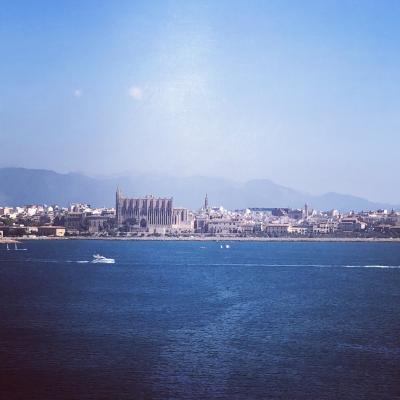Can you describe how Renaissance influences are integrated into Mallorca’s architectural landscape?
Similar Topics
mallorca architecture
renaissance influences
palma historic district
renaissance motifs
palau de l’almudaina
mediterranean renaissance
gothic to renaissance
renaissance craftsmanship
Mallorca's architectural landscape exhibits a rich tapestry woven with Renaissance influences, reflecting the island’s historical ties to broader European cultural movements. During the Renaissance period, roughly spanning the 15th to the 17th centuries, Mallorca was a thriving Mediterranean hub under the Crown of Aragon, which facilitated the exchange of artistic and architectural ideas. This era brought a marked shift from the fortified medieval Gothic styles towards constructions emphasizing symmetry, proportion, and classical elements inspired by ancient Roman and Greek forms. Central to this transformation in Mallorca are civic buildings, churches, and noble residences that subtly blend the island's traditional stonework with Renaissance motifs such as pilasters, cornices, and harmonious façade arrangements.
One of the clearest examples of Renaissance influence can be found in Palma’s historic district, where the intricate yet restrained decoration of portals and windows reflects the period’s aesthetic preferences. Manor houses and palaces, such as the Palau de l’Almudaina, demonstrate an evolution from purely defensive architecture towards more refined and comfortable living spaces, showcasing Renaissance spatial concepts. The use of geometric clarity and balanced proportions brought a sense of order and elegance that contrasted with the complexity of earlier Gothic interiors. Moreover, Renaissance artistry is often interwoven with local Mallorcan craftsmanship, creating a distinctive style that respects the island's identity while embracing continental trends.
This integration of Renaissance elements within Mallorca's architecture represents not just a stylistic import but a cultural adaptation. The Renaissance emphasis on humanism and renewed interest in classical antiquity resonated in the form of architectural features that promote light, openness, and harmonious spatial relationships. Churches commissioned during this period often feature Renaissance altarpieces and sculptures, highlighting a fusion of religious devotion with artistic renaissance ideals. Thus, Mallorca’s architectural heritage stands as a testament to how Renaissance influences were localized, enriching the island’s urban fabric and offering visitors a tangible link to a transformative era in European history.
One of the clearest examples of Renaissance influence can be found in Palma’s historic district, where the intricate yet restrained decoration of portals and windows reflects the period’s aesthetic preferences. Manor houses and palaces, such as the Palau de l’Almudaina, demonstrate an evolution from purely defensive architecture towards more refined and comfortable living spaces, showcasing Renaissance spatial concepts. The use of geometric clarity and balanced proportions brought a sense of order and elegance that contrasted with the complexity of earlier Gothic interiors. Moreover, Renaissance artistry is often interwoven with local Mallorcan craftsmanship, creating a distinctive style that respects the island's identity while embracing continental trends.
This integration of Renaissance elements within Mallorca's architecture represents not just a stylistic import but a cultural adaptation. The Renaissance emphasis on humanism and renewed interest in classical antiquity resonated in the form of architectural features that promote light, openness, and harmonious spatial relationships. Churches commissioned during this period often feature Renaissance altarpieces and sculptures, highlighting a fusion of religious devotion with artistic renaissance ideals. Thus, Mallorca’s architectural heritage stands as a testament to how Renaissance influences were localized, enriching the island’s urban fabric and offering visitors a tangible link to a transformative era in European history.
🧩 Related Questions
Related Question
Are there guided tours at the Lluc museum that focus specifically on Mallorcan religious art?
Related Question
Where can travelers find authentic Mallorcan almond products or souvenirs?
Related Question
Which museums or historical sites in Mallorca showcase the contributions of notable artists and writers?
